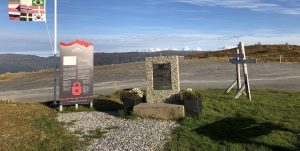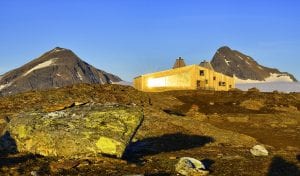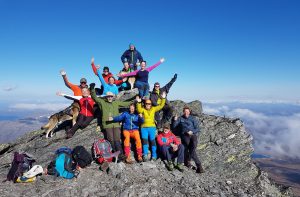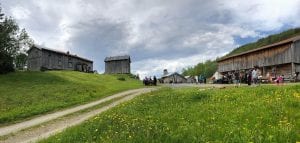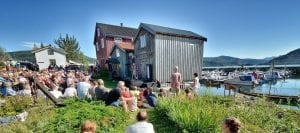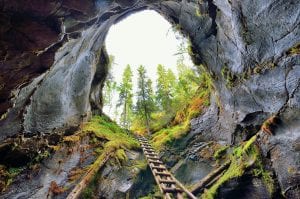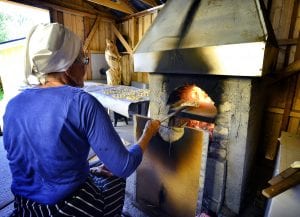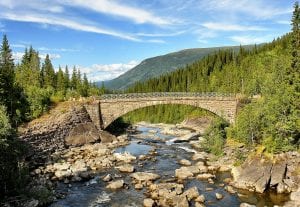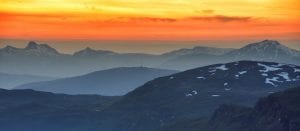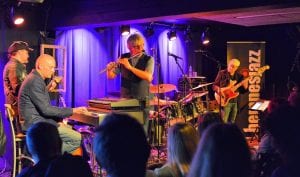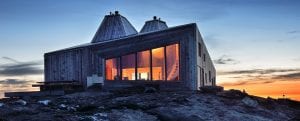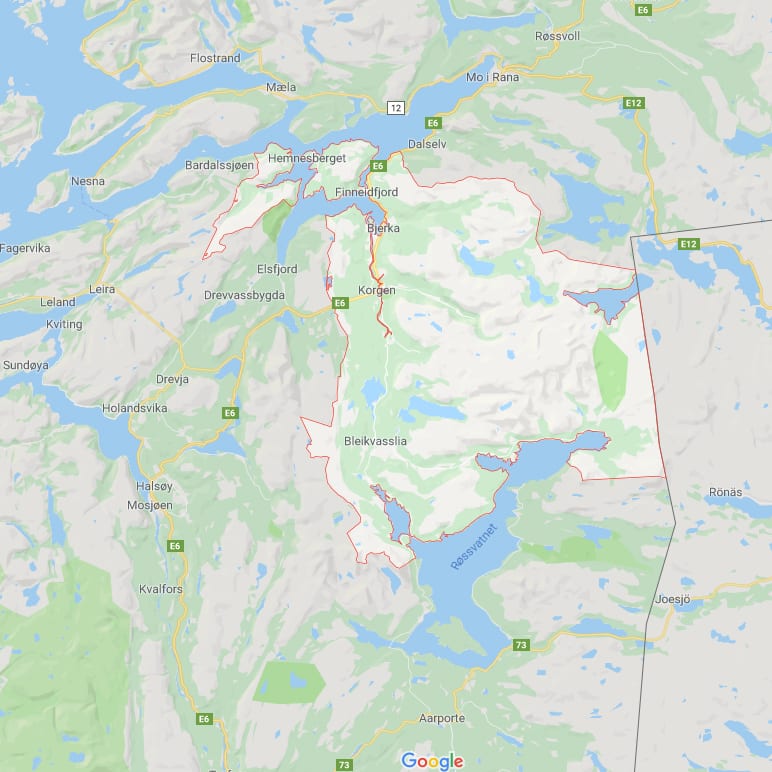On the 12th of May 1940, fires raged throughout Hemnesberget. Allied warships were bombarding the German forces that were occupying the fjordside village.
For more information see pictures below. Here follows the translation:
Picture 1
THE WAR ON HEMNESBERGET
a brief summary
by Torbjørn Skjæran
Hemnesberget burns the 12th of May 1940 – shot by Allied warships that attacked the German-occupied small town.
Photographed from Osmoen by Erna Dahlberg
Picture 2
HEMNESBERGET IN WAR
German preparations as early as 1937
Hitler’s vanguard – «Kraft Durch Freude» – was on Hemnesberget already three years before the war broke out ….
In the summer of 1937, the family at Juvik-gården was visited by five German schoolchildren, and four of them spoke fluent Norwegian. They were politically engaged, and as decent schoolchildren they told that they had a holiday from school at home in Germany.
Using a kayak and a raft of oil barrels and timber with tents, they paddled around the Ranfjord and drew very detailed maps. They said that they drew landscapes that they would try to sell or exchange for food.
At that time, few settlers had heard foreign languages, and especially the lively young girls tried to learn the language of these Germans without clue. The German schoolchildren gathered young girls around a jonsok bonfire in Langnesbukta on Juvika, but at this time of year open heat was strictly forbidden. Forest ranger Juvik was anxious that it could develop into a forest fire due to the young people’s careless action of open heat near the dry undergrowth. Together with his son, Sverre, he took the trip down to the beach, and abruptly told them to put out the fire, and said that they could risk being reported if they did not do so immediately. The forest ranger and the young people were able to extinguish the fire with the help of a large bucket and seawater from the fjord.
The German schoolchildren understood clear, Norwegian language, and quickly got on board the raft that was attached to land. They pushed off, and with the current they disappeared towards Kastan where they had their base. The forester afterwards found some half-burnt flyers which he took home to his wife who had learned some German. From these she could read news from Hitler’s youth organization under the name «Kraft durch Freude». After this, there was no doubt in the Juvik family that these Germans were well-educated cartographers who had no other goal than to prepare Hitler’s dreams of a Greater Germany or Third Reich.
Photo: Hemnesberget a few years before the war fire left most of the center in ruins (approximately 1930). Old postcard.
The acts of war – May 1940
Operation «Wild»
«Wildente» (Villand) was the Germans’ cover name for a force that was sent by sea from Trondheim to occupy Hemnesberget and Finneidfjord. Captain Holtzinger was commander of the force. The purpose was to get behind the Norwegian and British troops who fought against the Austrian «Sorko Battalion» led by Lieutenant Colonel August Sorko, under the pseudonym «Operation Buffalo». They advanced on national road 50 through Nord-Trøndelag and the southern part of Nordland on the way from Værnes to Narvik where it was to come to General Dietl’s rescue, when he was about to lose the battle in Narvik. For security reasons, the leaders of «Wildente» and «Buffalo» did not know about each other.
Photo: The steamship DS NordNorge
The Hurtigruten ship «DS NORDNORGE» which was built at Trondheim Mek. Workshop, was seized by the Germans in Trondheim and equipped with machine guns and ”mitraljøser”, heavier machine guns, for the force transport north.
Wednesday, the 8th of May, 1940
About 180 soldiers and heavy war equipment were loaded into the Hurtigruten ship in Murvik, just south of Hell. Among the soldiers were 103 Austrian alpine hunters from the 2nd Mountain Hunter Division and a heavy bomber troop. The equipment consisted of two mountain cannons and two marine machine guns. The crew was German navy under the command of Lieutenant Captain Vogelsang. The ship was called back to Trondheim due to submarine danger.
Thursday the 9th of May
At 10:30 pm, “DS NORDNORGE” sailed from Nyhavna in Trondheim with Hemnesberget as the destination. The ship had air support to the Namsenfjord. The voyage was bold since the ship from Rørvik sailed into an unoccupied area. The soldiers hid under deck and in the stern hung the Norwegian flag.
The destination for «DS NORDNORGE» was unknown, but one guessed at strategic places such as Mosjøen, Sandnessjøen, Nesna, Mo i Rana or Hemnesberget.
Picture 3
Friday, the 10th of May, 1940
At 09:50 am, Lieutenant Colonel Nummedal, chief of defense for Helgeland, was notified that «DS NORDNORGE» passed Rørvik and was followed by two German planes, and had to be stopped. The navy in Harstad asked the British to send naval units that could hijack or sink the ship, but there were no naval vessels nearby. When the ship had passed Vefsnfjorden and Sandnessjøen and sailed into Ranfjorden past Nesna, it was clear that the destination was either Hemnesberget or Mo. Both of these settlements had prepared for attacks from the ship and civilians had been evacuated. At Nesna, the Danish, volunteer captain Ellinger had therefore placed ensign Karl Hjelvik as commander of a group of approximately 60 shooting team members with weapons and ammunition.
At 11.55 am, an order was given to both the torpedo fighter «HMS ZULU» and the air defense cruiser «HMS CALCUTTA», both of which were located in Skjellfjord by Reine in Lofoten, to sink «DS NORDNORGE».
At 3 pm an air strike ended in Skjellfjord, and only then did «HMS Zulu» start. It made 34 knots and estimated to reach Hemnesberget at 7.15 pm.
At 5 pm, a German air force of 13 men was strategically landed on Sund from seaplanes under the cover name «Rudolf». The chief was Lieutenant Rudolf. They were to support Operation Wildente, which landed German troops by sea from Trondheim to Hemnesberget two hours later. They eventually took up positions on the farm Staulen, and there were heavy acts of war with the Allies who attacked.
At 6 pm «DS NORDNORGE» passed Barbalsøya, Captain Holzinger gave the order: «Ready for maneuver. Within an hour, we must expect an exchange of fire from all sides ”. On the bow, two machine guns were made ready. On the bridge, two machine guns were manned. The lifeboats were swung out. The Norwegian flag was lowered and the German war flag was hoisted.
At 7.15 pm, «DS NORDNORGE» rounded the Osmo headland and the German flag was hoisted on board. The ship docked with port side at Storkaia (now called Præstengkaia) on Hemnesberget. A sailor jumped ashore in the hail of bullets and fastened a rope to a bollard, and under fire cover from the ship, the rock hunters stormed over the row. They responded to the fire from 35 British and Norwegian soldiers who were in cover on land. Some wounded were brought back to the ship.
Photo: German soldiers come to Finneidfjord from Elsfjord with all kinds of improvised rafts and local boats.
At 8.15 pm, «HMS ZULU» and HMS CALCUTTA «entered the fjord. They sunk «DS NORDNORGE» and set the nearest buildings on fire. The Germans fought their way from street to street, and by midnight they had advanced to Åsen and had dominion over the whole of Hemnesberget. During further advance towards Sund, they were shelled by their own countrymen from the air force «Rudolf» due to communication failure. Strong German commands stopped the shooting.
Photo: Andreas Hauge / Vega publishing house
On the first day of the war, 16 houses burned down, and a few days later Allied warships entered the fjord and approximately 100 houses on Hemnesberget were laid in rubble after heavy cannon fire, without any military gain.
Saturday, the 11th of May
On this day, two more German seaplanes landed on Sund and landed two officers and 60 soldiers. The German forces on Hemnesberget and Sund were now ready to advance towards Finneidfjord, but met great resistance from a combined force of Norwegian soldiers under the leadership of the Danish volunteer captain Ellinger, assisted by British soldiers who had taken up position on Finneidfjord. This prevented the German advance towards Finneidfjord for two or three days.
The 14th of May at 4 pm the «Hemnes forces» started the battle of Finneidfjord. The defenders were the British 1st Independent Company under the command of Major May and the Norwegian force led by Captain Ellinger and crew continued to fight for a while, but had to give way at midnight to a much stronger opponent, who also received help from aircraft.
The road past Finneidfjord was thus open to the Sorko battalion which had arrived at Korgen on the 15th of May, and which could now march further north towards Dalselv without resistance. There was a battle on the 17th of May between the Sorco Battalion and a company from the Scots Guards. The Sorco Battalion made a tactical advance over the mountains and came behind the British. The Scots Guards thus had to withdraw and the Sorko Battalion was able to advance to Mo i Rana on the 18th of May.
Picture 4
The Germans’ own attack plan and map
Photo: map of Hemnesberget
- Here DS NordNorge docked with munitions and soldiers, but was sunk by Allied warships before the mission was completed.
- There were fierce street battles through Hemnesberget, and both civilian, British and German soldiers were killed in these acts of war.
- The Germans received reinforcements with seaplanes that landed on Sund.
German forces arrived by sea from Elsfjord to Finneidfjord on the 14th May 1940.
For more information, scan this QR code
(a more detailed map is being worked on – but it is not ready for publication yet)
A burned Hemnesberget in 1940
Photo: Picture taken by Hans Erik Nilsen
The acts of war on Hemnesberget from the 10th to the 14th of May 1940 left most of the city center desolate. This picture is composed of two pictures taken from the second floor of Alf Nilsen’s house in Parkveien.

